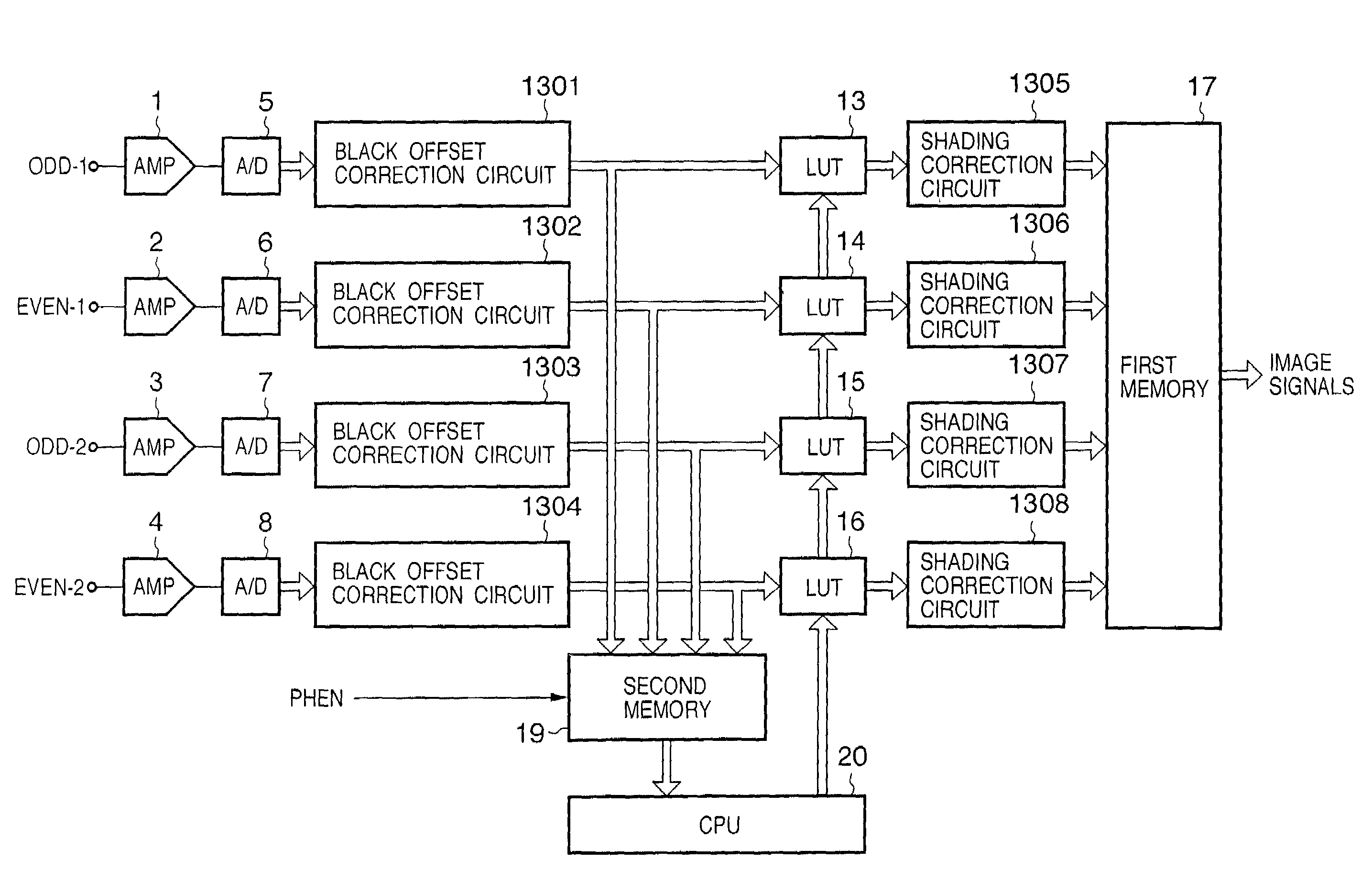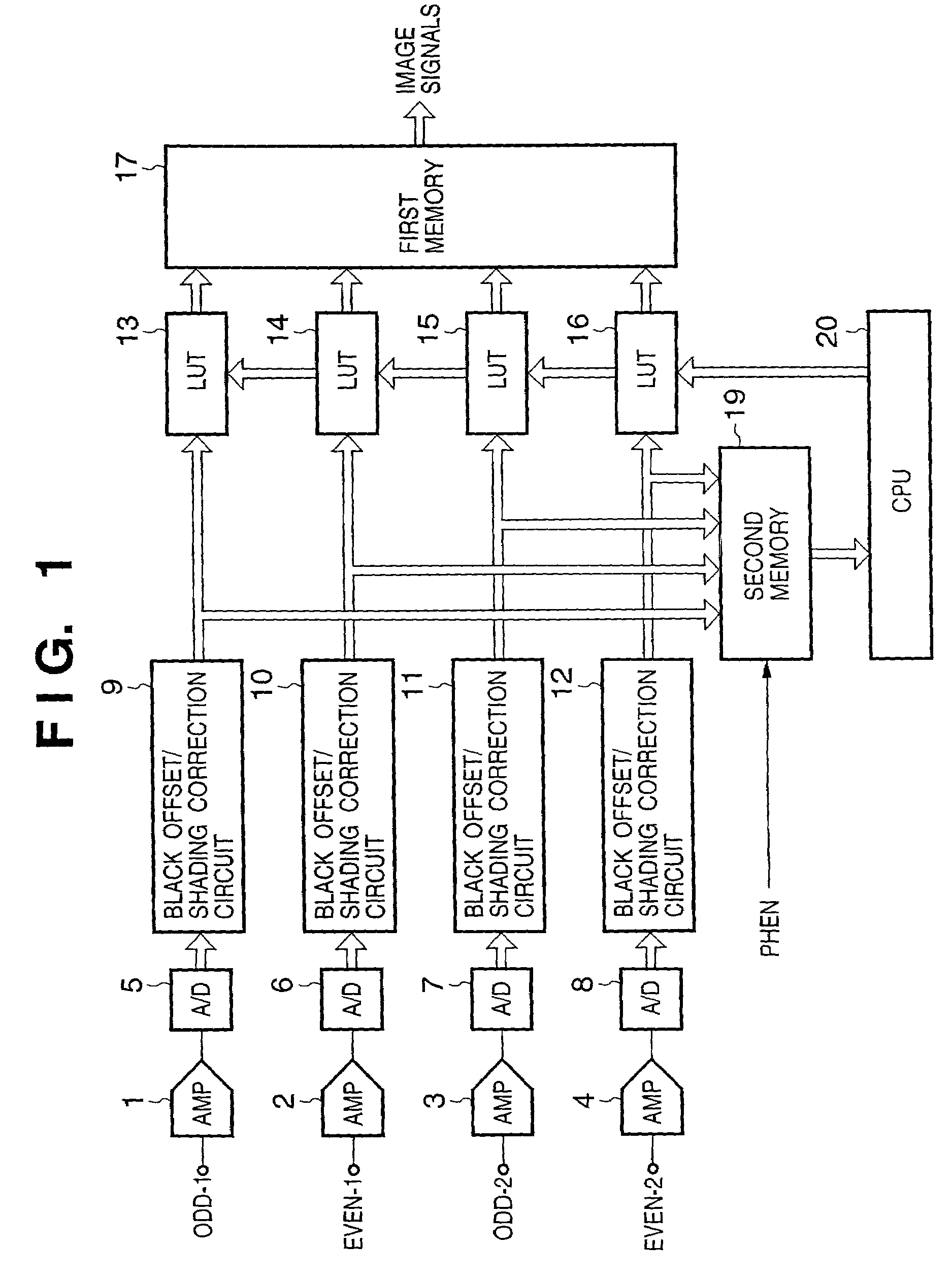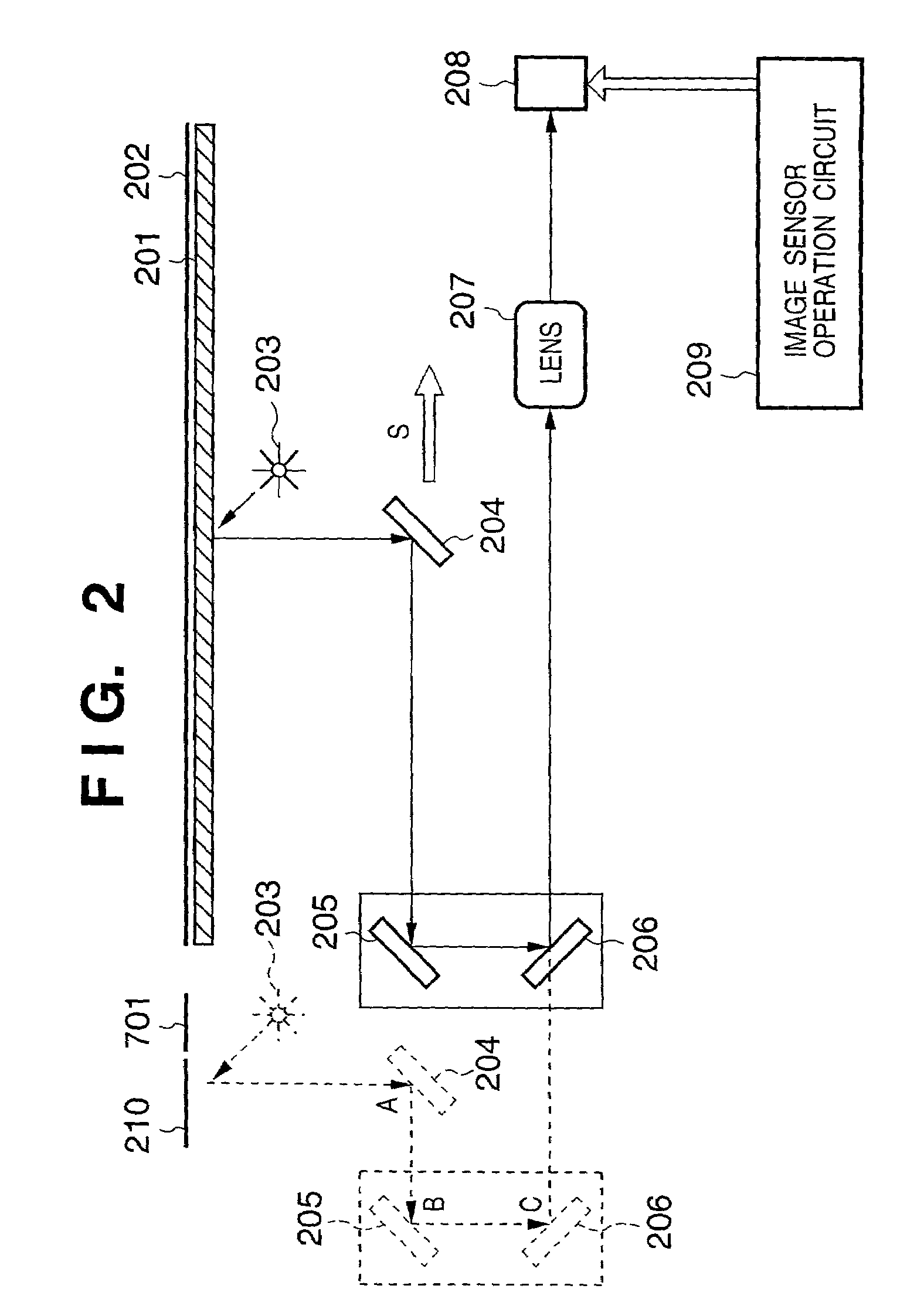Discrepancy correction method and apparatus for correcting difference in levels of image signals obtained by an image sensor having a multiple output channels
a technology of image signals and correction methods, applied in the field of discrepancy correction methods and apparatuses for correcting differences in levels of image signals obtained by image sensors, can solve problems such as discrepancy in read signals at the dividing point between the right- and left-side areas, and achieve the effect of reducing signal level differences
- Summary
- Abstract
- Description
- Claims
- Application Information
AI Technical Summary
Benefits of technology
Problems solved by technology
Method used
Image
Examples
first embodiment
[0053]FIGS. 1 to 3 shows a configuration of an image reading apparatus according to the first embodiment of the present invention.
[0054]In FIG. 1, reference numeral 1 to 4 denote amplifiers for amplifying output signals from an R / L type linear sensor as shown in FIG. 26; 5 to 8, A / D converters for converting output signals amplified by the amplifiers 1 to 4 to digital signals; 9 to 12, black offset / shading correction circuits for performing black offset correction by subtracting black offset level from the digital signals and performing shading correction.
[0055]LUTs 13 to 16 as discrepancy correction means are for realizing discrepancy correction (correcting level differences in signals) of the right and left signals by adjusting signal levels of ODD-1, EVEN-1, ODD-2 and EVEN-2.
[0056]A first memory 17 is used for temporarily storing signals output from the R / L type linear sensor at timing shown in FIG. 27, and rearranging the order of the signals to the order of pixels, and outputti...
second embodiment
[0077]Next, the second embodiment will be explained.
[0078]In the first embodiment, the discrepancy correction means are arranged downstream to the shading correction circuits. In other words, signals output from the respective channels are applied with shading correction first, then discrepancy correction next, so that linearity of the signals from the respective channels match. Therefore, when the quantity of light emitted by the illumination lamp changes and gains used in shading correction change, there is a possibility that correction data used in the linearity correction may become inappropriate.
[0079]In order to solve this problem, an image reading apparatus according to the second embodiment of the present invention has a configuration as shown in FIG. 9.
[0080]The configuration shown in FIG. 9 differs from that shown FIG. 1 explained in the first embodiment in that the LUTs 13 to 16 as discrepancy correction means for performing discrepancy correction are arranged upstream to...
third embodiment
[0087]The third embodiment of the present invention will now be explained.
[0088]The configuration of an image reading apparatus according to the third embodiment is the same as that explained in the first embodiment with reference to FIGS. 1 to 3, therefore, the explanation of it is omitted here.
[0089]Next, a method of correcting linearity of the respective channels according to the third embodiment will be explained in detail.
[0090]FIG. 10A shows relationship between signal levels of the respective channels before performing the linearity correction (e.g., LUT conversion). In the graph of FIG. 10A, the abscissa represents brightness of an original, and the ordinate represents signal levels of read image. The black level of each channel is corrected in black level correction, and the white level is corrected in shading correction by the black offset / shading correction circuits 9 to 12. Accordingly, there are not much difference in black and white signal levels between the respective...
PUM
 Login to View More
Login to View More Abstract
Description
Claims
Application Information
 Login to View More
Login to View More - R&D
- Intellectual Property
- Life Sciences
- Materials
- Tech Scout
- Unparalleled Data Quality
- Higher Quality Content
- 60% Fewer Hallucinations
Browse by: Latest US Patents, China's latest patents, Technical Efficacy Thesaurus, Application Domain, Technology Topic, Popular Technical Reports.
© 2025 PatSnap. All rights reserved.Legal|Privacy policy|Modern Slavery Act Transparency Statement|Sitemap|About US| Contact US: help@patsnap.com



